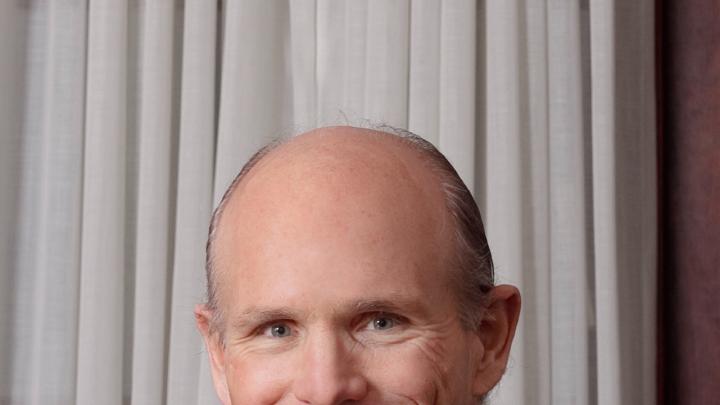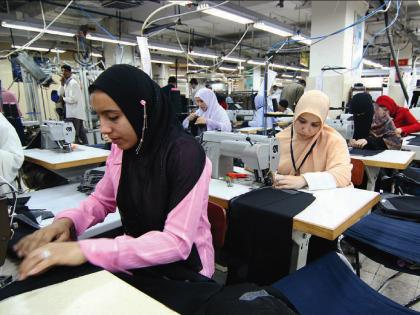Just 10 weeks ago, Harvard deans learned that the Corporation would decrease distributions from the endowment, rather than increasing them, in light of the pandemic-induced recession and reduced investment values. The projected decline, 2 percent, was modest—but it reversed an expected funding increase built into budgets for the fiscal year set to begin July 1. Because endowment distributions are the largest source of operating revenue (35 percent) across the University—and loom even larger for units like the Faculty of Arts and Sciences (FAS), for example, which derives half its revenue from that source—the change in plans was painful.
Scroll forward to August 6, and FAS dean Claudine Gay revealed that the Corporation had decided to change course to the extent of holding the distribution per unit of the endowment level for this fiscal year, “based on the current performance of the capital markets.”
It is indeed shaping up to be that kind of year, even for universities—traditionally, stable institutions that can forecast precisely their expected enrollment, tuition income, salary and benefit costs, and more, no matter the short-term vicissitudes of the world beyond. But not during a pandemic.
With only a small College cohort—perhaps 25 percent of the undergraduates—expected to appear on campus by the time their (remote) classes begin September 2, accompanied by a proportionally larger resident enrollment at Harvard Business School (HBS), across the Charles River in Allston, the following summarizes some of what can be known now, among enormous uncertainties, about the University’s financial outlook. The most recent official attempt at a comprehensive overview of the situation was executive vice president Katie Lapp’s early-May guesstimate that Harvard would fall $415 million short of anticipated revenue in fiscal year 2020, which ended June 30, with an additional $750-million shortfall in the new fiscal year 2021. While financial administrators are now closing out the 2020 accounts, one gets the sense that variances in the 2021 estimate of a couple of hundred million dollars either way would not come as a surprise. Vice president for finance and chief financial officer Thomas Hollister and his colleagues have plenty to do as they manage Harvard’s resources, and work with beleaguered deans and faculties at the beginning of a year unlike any in memory.
The Endowment
In late spring, when the Corporation announced the planned decrease in the distribution, as opposed to the previously budgeted increase, public securities markets were still recovering from their spring swoon. Deans and faculties faced a net swing of 4.5 percentage points in the revenues they could expect from that source: in aggregate, perhaps a $90-million to $100-million reduction. But those markets have rebounded, bolstered by the multi-trillion-dollar economic-rescue packages effected by Congress and the Federal Reserve Board. In light of that, apparently, the Corporation’s revised decision to hold the distribution flat means a recovery, for the faculties, of perhaps $40 million to $50 million in spendable funds, during a year when their expected income from tuition and other fees is under severe pressure, many costs are up, and the outlook for donor and sponsored-research support is unpredictable.
(Updated August 15, 2020, 5:50 p.m.: In a Harvard Gazette interview published on the afternoon of August 14, Hollister cited the improved investment markets in explaining the Corporation’s decision to hold the endowment distribution level during the current fiscal year. He also cautioned that the intermediate-term outlook for investments “is not attractive”—suggesting, lest deans get too excited, that “ongoing pressure on the distribution” is in prospect for “more than a few years.”)
It is premature to guess what the endowment will be worth when Harvard Management Company issues its annual report this autumn. Last year, it totaled $40.9 billion. Although the Corporation apparently felt sufficiently confident to reverse its downbeat June guidance (and perhaps sufficiently concerned about the schools’ fiscal position in light of plummeting revenues), it is still too early to know the year-end valuations of the private investments and some of the hedge-fund assets that make up a large share of the endowment’s portfolio. A flat or even modestly positive investment return could still result in a reduction in the endowment’s value, given that nearly $2 billion is distributed for operations annually. A surge of gifts for endowment could offset that effect in part, or perhaps even result in a higher endowment value. Stay tuned. For now, the significant facts are:
- deans and schools can expect some relief from the dire guidance provided in June; but
- the decision made then to assess endowment distributions 3 percent to help pay for the costs of adapting to the coronavirus will still put the beneficiaries of such distributions under some constraints—albeit milder than they were recently anticipating.
Tuition, Room, and Board
At this point, no one can confidently say how much tuition, room, board, and fee income Harvard schools can expect—for an academic year that begins in less than three weeks. For example, Harvard College planned to accommodate 40 percent of undergraduates in residence. But as Dean Gay reported:
- only about 1,630—a bit less than 25 percent—have accepted that offer (a number that continues to change); and
- only about 5,230 undergraduates had committed to enroll: about 78 percent of the total.
Undergraduate tuition revenues (before financial-aid costs are deducted) were $339 million in fiscal 2019, and College room and board accounted for a good chunk of the $197 million in such revenue reported University-wide that year. About one-fifth of College students and their families have their costs fully covered by Harvard, under the financial-aid program, and more than one-half of undergraduates receive some aid. Without knowing the aid profile of those in residence, those enrolled but not in residence, and those not enrolled, one cannot make any close estimate of FAS revenue from the term bill—but the arithmetic is daunting no matter the demographics. The 2020-2021 term bill is $72,357, consisting of:
- $49,653 for tuition;
- $ 4,315 for fees;
- $11,364 for room; and
- $ 7,025 for board.
Holding aside all considerations of financial aid (an unrealistic assumption), and assuming that the College operates for the full year as it now expects to during the fall semester (dependent on public-health conditions) and that full-year enrollment remains 5,230,(compared to 6,700 under normal conditions), the loss of 1,470 matriculants translates into a gross revenue loss of $106 million. (That sum is offset, as noted, by financial aid not distributed—and by the costs not incurred for providing room and board services.) If 3,600 or so students are enrolled entirely remotely (not resident in Cambridge), that represents another $66 million or so of forgone revenue (again ignoring potential savings from not having to provide the associated lodging and meal services, plus some aid being provided to students in need who are living at home). Those are not trivial sums for FAS, which reported $1.5 billion in revenue for fiscal 2019 (the last year reported).
As noted, HBS plans to operate on a more residential basis, as does the Medical School other than for first-year students—but each dean confronts complex calculations about who will show up and what tuition revenue, ordinarily the most dependable of income, to expect.
Other Revenue
As reported, Harvard has had a uniquely successful franchise, extending from HBS and FAS’s extension school to many of the other faculties, in continuing and professional education: in fiscal 2019, a half-billion-dollar business. Since last spring, with the pandemic extending globally and travel slowed to a trickle, much of that business has simply evaporated. HBS is gearing up its studio-based online courses, and other schools report some opportunities, but the bulk of the business is gone for now. It is further constrained, in many instances, by the severe economic recession in much of the developed world, where the professional students who can afford Harvard fees work and live.
As noted, philanthropic and sponsored-research support are uncertain. Current-use gifts have in recent years totaled 8 percent to 9 percent of Harvard revenues, and sponsored support about 17 percent: significant contributors to the University’s consolidated fisc.
Added Costs
Although perhaps only one-quarter of College students will be in residence, providing them with socially distanced quarters means that perhaps 40 percent to 50 percent of Yard dorms and House accommodations will need to be used. Thus, the smaller resident cohort does not translate into an equivalent reduction in space in operation. In addition, the former Inn at Harvard and other facilities are being held ready in case students test positive for the coronavirus and need to be housed in isolation. Dining will be provided on a grab-and-go basis, as it was in the spring; that is in some respects less expensive than dining-room service, but in others—individual packaging, for example—more so.
To date, the University has not furloughed or laid off dining-service, building operations, and security employees and contractors. But the cost of sustaining the full workforce during a fall semester (and possibly full academic year), during largely remote operations, with much-reduced student cohorts in residence, looms as one of the more fraught issues ahead for the staff members and contractors themselves, of course, and for deans’ budgetary decisions and the University at large.
Large new costs include the University’s virus testing and tracing regimen, which calls for community members to be tested weekly, twice weekly, or three times per week depending on where individuals live and work. Conceivably, those costs could total tens of millions of dollars annually. In addition, there have been capital costs for building modifications; changes in building operations (more air exchanges, for example); and enormous investments in adapting new forms of remote learning (more than 1,000 FAS faculty members and teaching fellows took a week-long training program this summer to learn how to make their classes more engaging and effective), and in recasting hundreds of courses. The class day will be extended, too, to accommodate remote learners in time zones around the globe.
In Perspective
Although perhaps not directly related, one possible sign of the strains and readjustments arising across Harvard was reported earlier this week. The complex renewal of Adams House, originally scheduled to conclude in time for the fall 2023 semester, and as of this past spring scheduled to conclude by the fall of 2024, is now on a still-slower schedule. On August 8, faculty deans Sean and Judy Palfrey advised their community that after the spring construction halt, work has resumed—but the second and third phases of renovation will be deferred. With work on Randolph Hall, scheduled to begin this past June, on hold “until at least July 1, 2021,” the subsequent phase is “automatically delayed until at least June 2023, at the earliest.” Some of this rescheduling certainly reflects the intersection of construction delays with the academic-year calendar. But some may reflect FAS’s desire, and need, to rein in construction spending (the Adams House project alone is a few-hundred-million-dollar outlay) when it is trying to conduct teaching and research under pandemic conditions, and protect the livelihoods of hundreds of staff members.
Finally, hard though it is to believe, circumstances could be even more complex and confusing. Harvard has prepared to house and test a small number of students in what it expects will be safe conditions. Princeton, on August 7, abandoned its plan for a partially residential undergraduate experience in the fall semester. On August 13, Stanford followed suit for its autumn quarter.
Thus far, having planned conservatively, and been abetted by an effective Massachusetts effort to control the coronavirus, Harvard has been able to hold to its plans for at least some education in residence (with remote classes) this fall. But as the pandemic has proved, even the best-laid plans have been continually disrupted and torn up.







